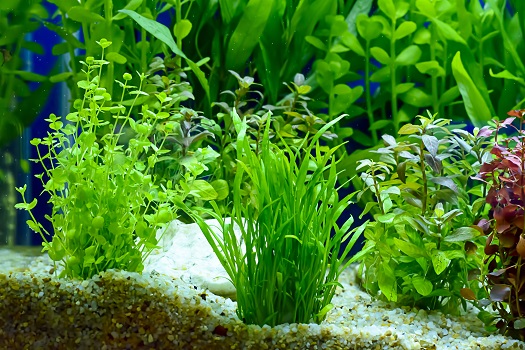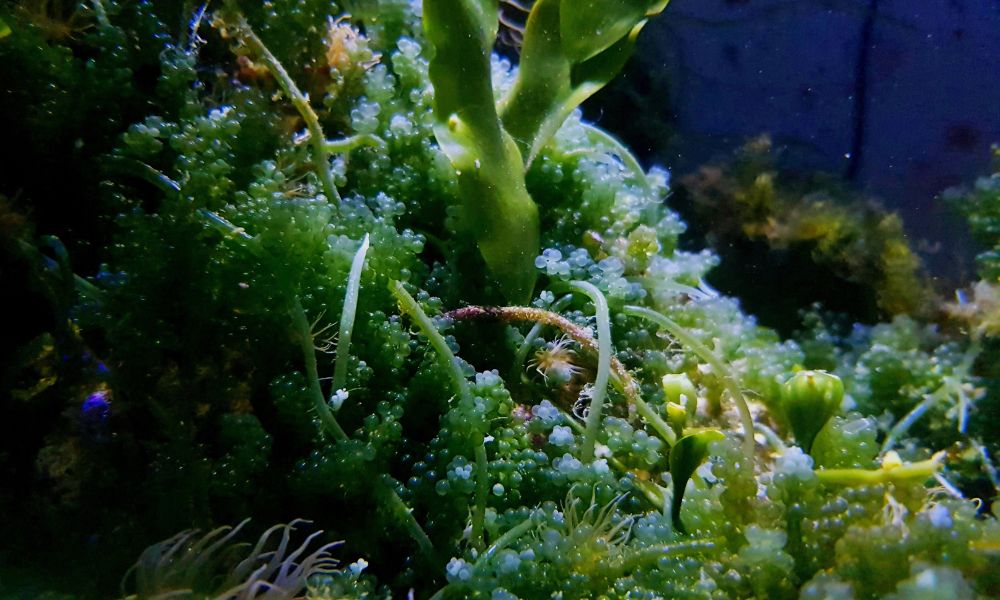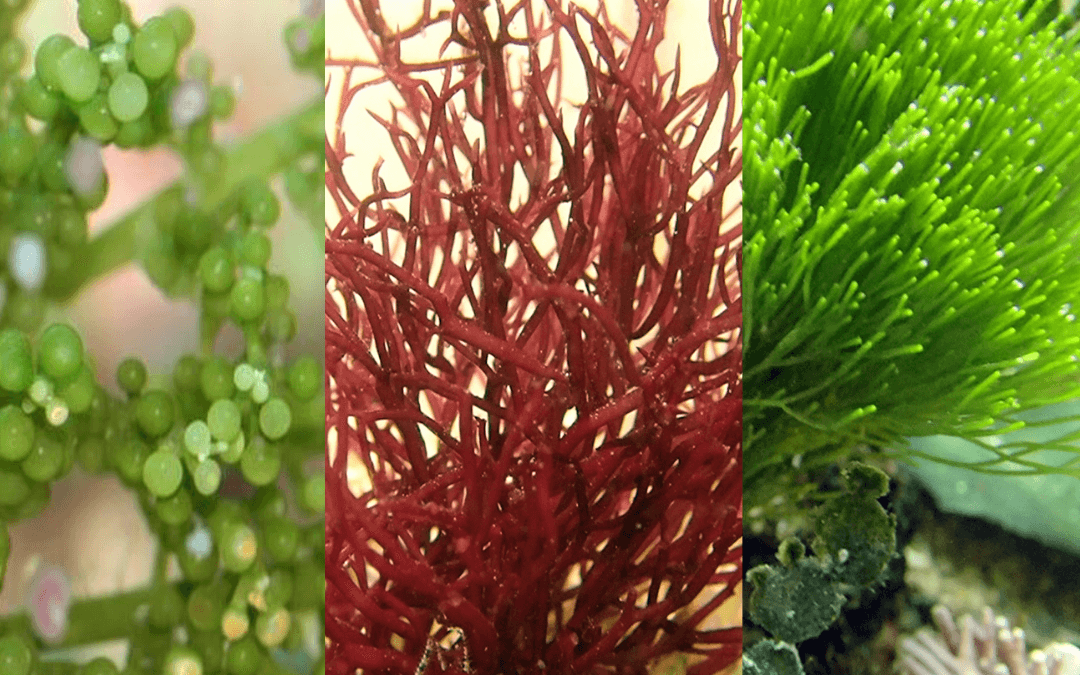Yes, some aquarium plants can survive in saltwater. Others cannot.
Understanding which plants thrive in saltwater is key. Aquarium enthusiasts often face the challenge of maintaining a balanced ecosystem. Saltwater tanks add another layer of complexity. While many plants thrive in freshwater, saltwater presents unique hurdles. Knowing the right plants can enhance your tank’s beauty and health.
This blog will explore which plants are suitable for saltwater aquariums. We will also discuss the care they need. Dive in to discover how to create a thriving saltwater plant environment.
Aquarium Plants Basics
Aquarium plants can survive in saltwater, but only specific species. Most common aquarium plants thrive in freshwater environments.
Aquarium plants enhance the beauty of fish tanks. They create a natural habitat for fish. Plants also help maintain water quality. Understanding the basics of aquarium plants is essential.Types Of Aquarium Plants
Aquarium plants come in many types. Floating plants rest on the water’s surface. Submerged plants grow entirely underwater. There are also rooted plants which anchor in the substrate. Each type has its unique benefits and care needs.Freshwater Vs. Saltwater Plants
Freshwater plants thrive in tanks with low salinity. Common freshwater plants include Java Fern and Anubias. Saltwater plants, like seagrasses, need higher salinity levels. Freshwater plants cannot survive in saltwater. They lack the adaptations for high salinity environments. “`
Credit: blog.aquaticwarehouse.com
Saltwater Environment
Can aquarium plants survive in saltwater? This is a common question among aquatic hobbyists. The saltwater environment differs greatly from freshwater. Understanding these differences is key to maintaining a healthy marine tank.
Salinity Levels
Salinity levels in saltwater tanks are much higher than in freshwater. Freshwater plants cannot tolerate high salt levels. In saltwater, osmotic pressure can damage plant cells. This makes it difficult for most freshwater plants to survive. Proper salinity levels are crucial for marine life. Regular testing ensures the right balance.
Marine Ecosystem
The marine ecosystem is rich and diverse. It supports a wide range of marine species. Saltwater plants and corals thrive here. They have adapted to the salty environment. Examples include mangroves and sea grasses. These plants play a vital role in marine habitats. They provide shelter and food for marine creatures. Freshwater plants, on the other hand, struggle in this ecosystem. They lack the adaptations needed to thrive.
Challenges For Plants In Saltwater
Aquarium plants face many challenges in saltwater environments. These plants usually thrive in freshwater settings. Saltwater can create a hostile environment for them. The increased salinity affects their growth and survival. Let’s explore some of the main challenges they face.
Osmosis Effects
Osmosis plays a crucial role in plant health. In saltwater, osmosis can cause plants to lose water. This happens because saltwater has a higher salt concentration. The plant cells try to balance the concentration. They lose water to the salty environment. This can lead to dehydration and wilting.
Nutrient Availability
Nutrient availability is another major challenge. Saltwater can alter the availability of essential nutrients. Plants need nutrients like nitrogen, phosphorus, and potassium. These nutrients might become less accessible in salty conditions. This affects the plant’s ability to grow and thrive. The imbalance can also lead to nutrient deficiencies.

Credit: fishtanksdirect.com
Adaptations Of Saltwater Plants
Some aquarium plants can adapt to saltwater environments. These plants develop specialized features for survival. Not all freshwater plants can thrive in saltwater.
Saltwater plants have unique adaptations. They thrive in challenging environments. These plants face high salt levels. Yet, they flourish. How do they manage? Let’s explore their special traits.Salt Tolerance Mechanisms
Saltwater plants have special cells. These cells store excess salt. This prevents damage. Some plants excrete salt through leaves. It keeps their system balanced. Others develop thicker leaves. This reduces water loss.Species Examples
Seagrasses are common saltwater plants. They grow underwater. Mangroves are another example. They live in coastal areas. Each has unique adaptations. Seagrasses have flexible leaves. This prevents damage from waves. Mangroves have special roots. These roots filter salt. It helps them survive in salty soils. “`Transitioning Freshwater Plants
Aquarium plants face challenges in saltwater. Most freshwater plants cannot survive due to high salinity levels. Some plants may adapt over time.
Aquarium enthusiasts often wonder if freshwater plants can live in saltwater. The transition process is not straightforward. Freshwater plants thrive in specific conditions. Changing these conditions can stress the plants. But with careful steps, some plants may adapt.Acclimation Process
The acclimation process is crucial. Start by slowly increasing the salt content in the water. Do this over several weeks. Sudden changes can shock the plants. Monitor the plants closely during this period. Look for signs of stress such as yellowing leaves. Provide extra nutrients to help the plants adjust. Use a high-quality aquarium plant fertilizer. This supports their health during the transition. Regular water testing ensures you maintain the right conditions.Survival Rates
Survival rates vary among freshwater plants. Some plants adapt better than others. Java fern and anubias have higher chances of survival. They can tolerate brackish water conditions. Brackish water has lower salt levels than full saltwater. Other plants may not survive the transition. Delicate plants often fail. Their roots and leaves cannot handle the salt. It is best to start with hardy plants. Over time, you will see which plants thrive. In conclusion, transitioning freshwater plants to saltwater is challenging. But with patience and careful monitoring, some plants may adapt. “`
Credit: blog.aquaticwarehouse.com
Best Plants For Saltwater Tanks
Choosing the right plants for a saltwater aquarium can be challenging. Not all plants thrive in a marine environment. Some plants are better suited for saltwater tanks than others. This section highlights the best plants for saltwater tanks, ensuring your marine habitat flourishes.
Marine Algae
Marine algae are a popular choice for saltwater tanks. They provide food and shelter for marine life. Common types include green, red, and brown algae. Green algae, like Caulerpa, are easy to grow and maintain. They absorb nitrates, improving water quality. Red algae, such as Gracilaria, are also beneficial. They offer a natural look and support healthy fish. Brown algae, like Sargassum, are another option. They grow quickly and can help control nutrient levels.
Mangroves
Mangroves are another excellent choice for saltwater tanks. They thrive in brackish and marine environments. Mangroves help filter water and provide habitat for marine creatures. The Red Mangrove is popular among aquarists. It has strong roots that anchor in the substrate. The Black Mangrove is another option. It tolerates high salinity and grows well in aquariums.
Maintaining A Saltwater Planted Tank
Maintaining a saltwater planted tank presents unique challenges. The delicate balance of saltwater and plant life requires careful attention. Here, we explore key aspects to help you succeed in this endeavor.
Water Quality Management
Water quality is crucial for a saltwater planted tank. Regular testing and monitoring are essential. Saltwater plants need stable conditions to thrive.
Monitor the following parameters:
- Salinity: Keep it between 1.020 and 1.026 specific gravity.
- pH: Maintain a range of 8.0 to 8.4.
- Nitrate: Keep levels below 20 ppm.
- Phosphate: Aim for less than 0.03 ppm.
A table can help track these values:
| Parameter | Ideal Range |
|---|---|
| Salinity | 1.020 – 1.026 |
| pH | 8.0 – 8.4 |
| Nitrate | Below 20 ppm |
| Phosphate | Less than 0.03 ppm |
Light And Temperature Needs
Light and temperature are vital for plant health. Saltwater plants need specific light and temperature conditions.
Use these guidelines:
- Light Intensity: Use full-spectrum LED lights.
- Photoperiod: Provide 8-10 hours of light daily.
- Temperature: Maintain between 72°F and 78°F.
Too much or too little light can harm the plants. Consistent temperature helps avoid plant stress. Use a reliable heater and thermometer.
Common Mistakes To Avoid
Keeping aquarium plants in saltwater can be challenging. Many beginners make common mistakes that harm the plants. Learning about these mistakes can help you maintain a healthy aquarium.
Overlooking Salinity Levels
Salinity levels are crucial for the survival of aquarium plants. Many freshwater plants cannot tolerate high salt levels.
Use a refractometer to measure salinity. Make sure the levels are suitable for the plants you choose. Here is a simple table for common salinity levels:
| Plant Type | Salinity Level (ppt) |
|---|---|
| Freshwater Plants | 0-5 |
| Brackish Plants | 5-20 |
| Saltwater Plants | 20-35 |
Ignoring Plant Needs
Each plant has specific needs. These include light, nutrients, and CO2. Research your plant’s requirements before placing them in your tank.
Some plants need high light, while others need low light. Check if your lighting system matches your plants’ needs. Use fertilizers to provide essential nutrients.
CO2 is vital for plant growth. Use a CO2 injector to maintain proper levels. Ignoring these needs can lead to unhealthy plants.
Frequently Asked Questions
Can Freshwater Plants Live In Saltwater Aquariums?
No, freshwater plants cannot survive in saltwater. Saltwater can damage their cells and lead to their death. Freshwater plants are adapted to low salinity levels. For a successful saltwater aquarium, choose marine plants designed for high salinity.
What Happens If You Put Freshwater Plants In Saltwater?
Freshwater plants will die in saltwater. The high salinity disrupts their cellular processes. They are not adapted to handle salt stress. It’s important to use plants suitable for the specific water conditions.
Are There Saltwater Plants For Aquariums?
Yes, there are many saltwater plants. Examples include seagrasses and marine algae. These plants are adapted to thrive in high salinity levels. They provide shelter and oxygen to marine life.
How Do Salt Levels Affect Aquarium Plants?
Salt levels greatly impact aquarium plants. Freshwater plants can’t handle high salinity. Salt causes their cells to dehydrate and die. Saltwater plants thrive in high salinity due to their adaptations.
Conclusion
Saltwater can be tough for freshwater plants. Only a few can adapt. Choose carefully when mixing plant types. Research is key. Look for plants labeled “saltwater tolerant. ” Healthy plants mean a healthy tank. Regular maintenance helps. Keep an eye on plant health.
Enjoy the beauty of your aquarium. Experimenting can be fun. Always learn from experience.





